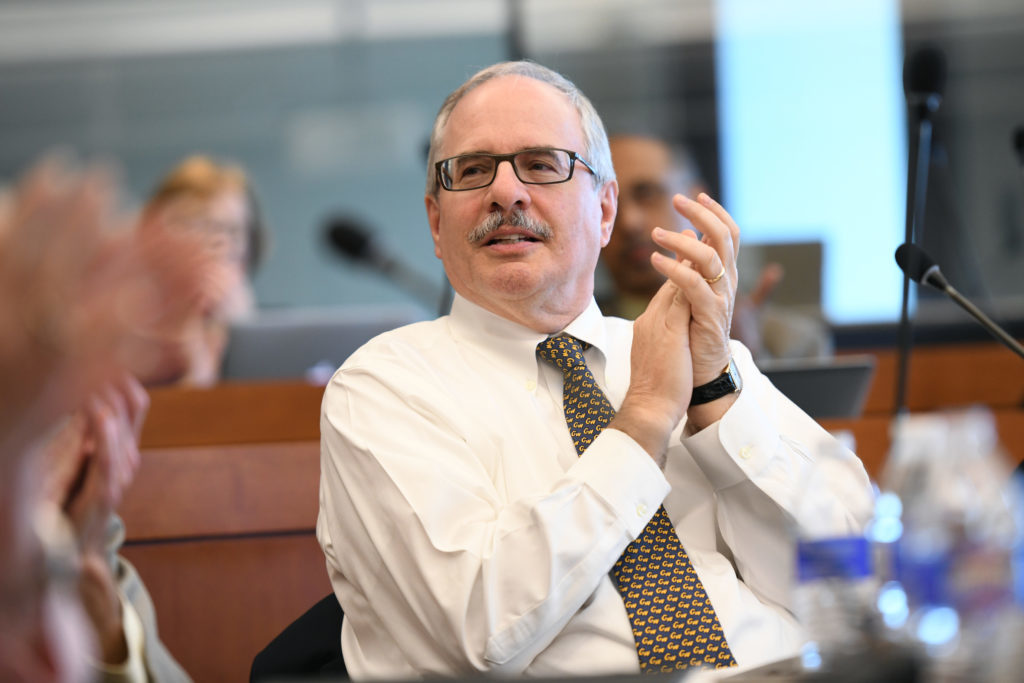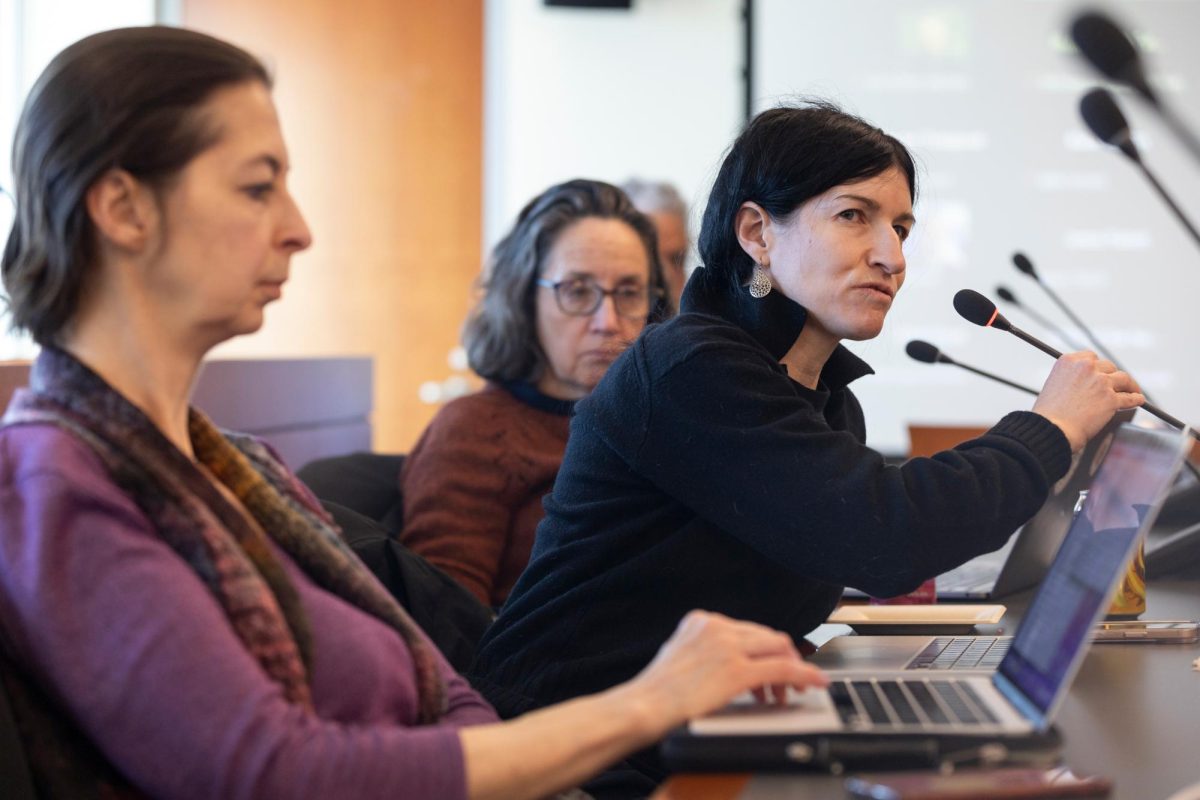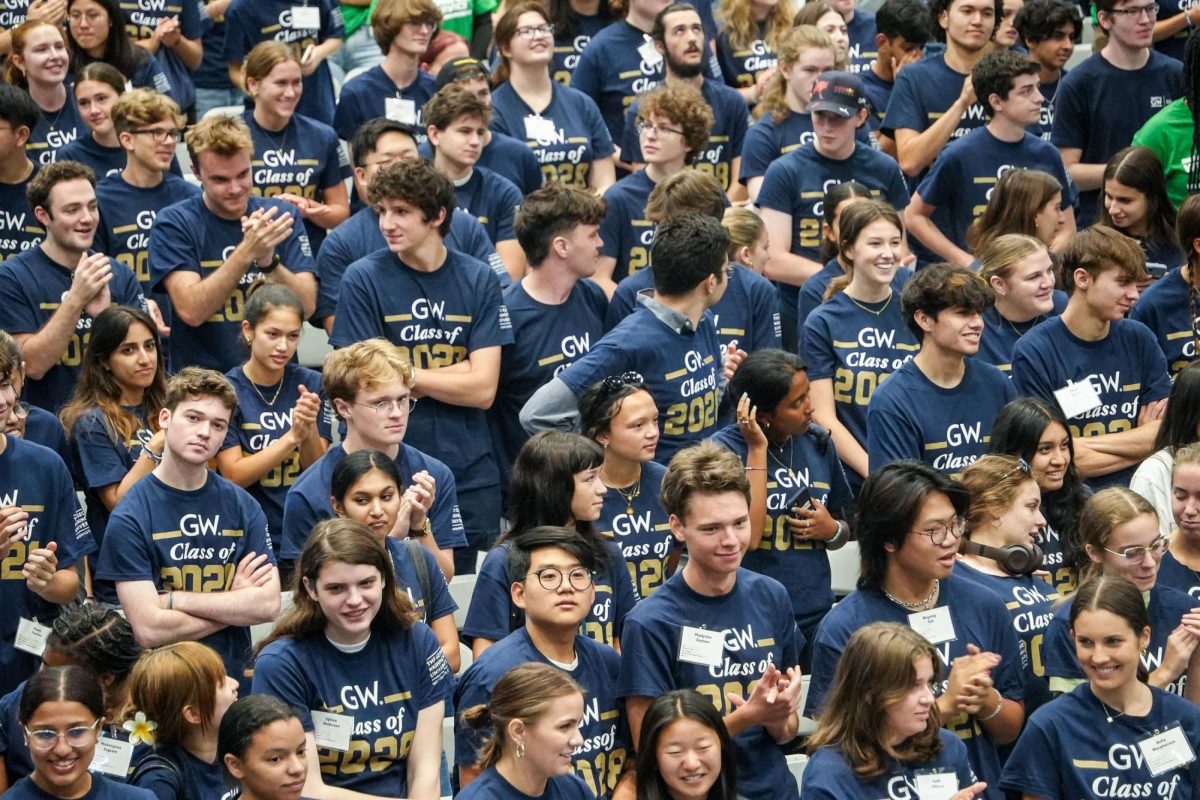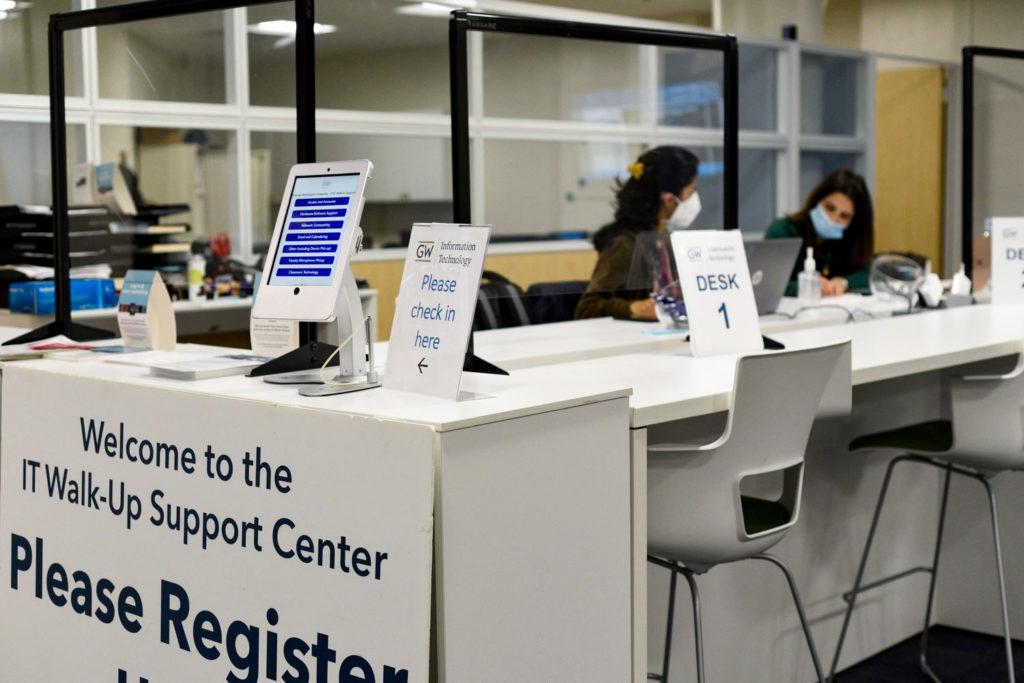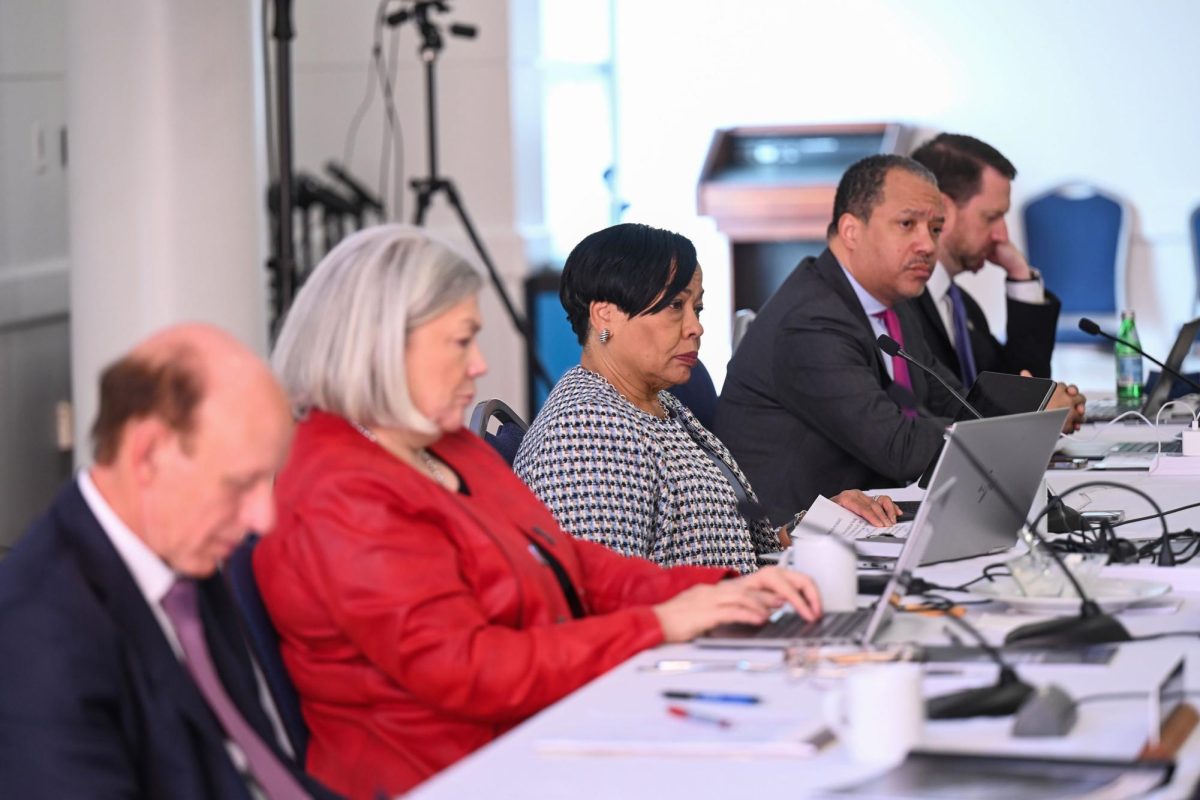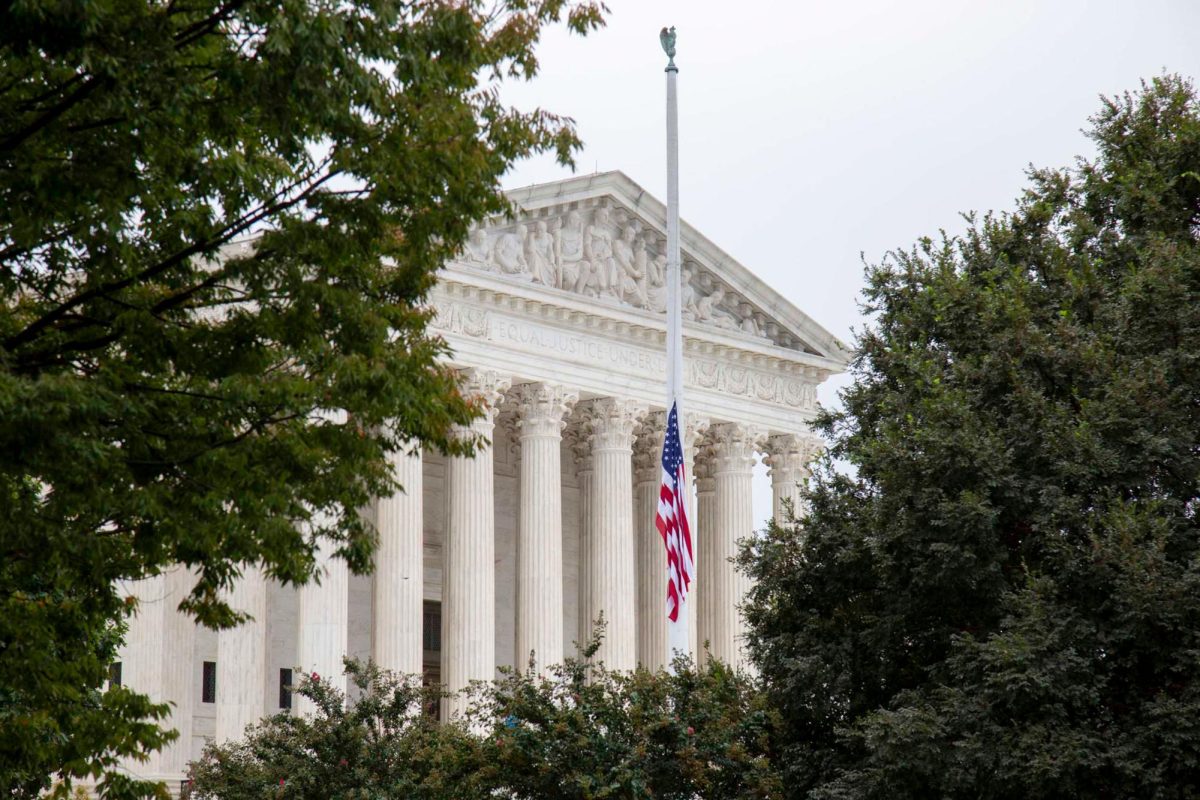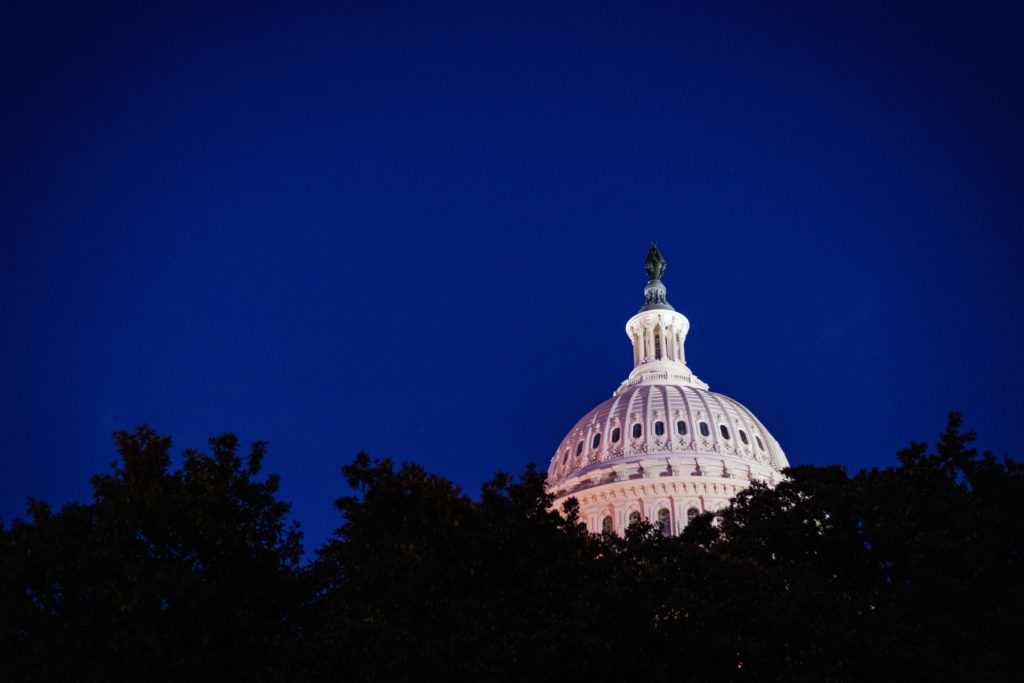The 2010s was a decade of transformation for GW.
The University welcomed a new president, while other top officials shuffled in and out of campus. Multi-million dollar residential and academic halls were constructed, student health care underwent years of transition and admissions policies shifted.
Here’s a look back at the biggest events of the decade:
Admissions office overhauls policies
[gwh_image id=”1074762″ credit=”Hatchet File Photo” align=”none” size=”embedded-img”]The University will admit fewer students over the next five years in an effort to reduce the undergraduate population by 20 percent.[/gwh_image]
The admissions office has encountered both scandal and sweeping change over the past 10 years.
The University was pulled from the U.S. News and World Report rankings in 2012 after officials admitted to inflating admissions data for more than a decade. The following year, officials disclosed that they had always considered applicants’ financial statuses in admissions decisions, despite previous claims that GW had followed a need-blind policy for years.
In July 2015, the University switched to a test-optional policy, leading to a spike in applicants and an increasingly diverse class nearly every year since. Admissions officials embarked on trips to recruit students from historically marginalized communities in an effort to boost diversity. Two admissions officials, the dean of admissions and the senior vice provost for enrollment and the student experience who spearheaded admissions changes, both resigned earlier this year.
The University revealed two major admissions changes this year that higher education experts say will put GW in line with its peer schools and make the school more selective. GW’s longstanding fixed tuition policy will end with the Class of 2024, and undergraduate enrollment will shrink by 20 percent, while the proportion of STEM students will grow to 30 percent over the next five years. Faculty have pushed back on the University’s enrollment plans, saying the reduction may decrease revenues and diversity.
Health center goes through leadership changes
[gwh_image id=”1088674″ credit=”File photo by Arielle Bader | Assistant Photo Editor” align=”none” size=”embedded-img”]Health services relocated from K Street offices to the Marvin Center in 2015.[/gwh_image]
Tragedy swept through campus in the early 2010s after three students died, two by suicide, on the Mount Vernon Campus in spring 2014. Soon after their deaths, the University opened mental health services on the Vern, and students introduced the anonymous peer hotline GW Listens a couple of years later.
In spring 2015, health services moved from K Street offices to the Marvin Center after Student Association leaders called for the services to relocate. But the Colonial Health Center has been plagued with turnover since three staffers, including the former leader of Mental Health Services, were found practicing without a license in the same year. The next director quit suddenly after a six-month stretch, later alleging that the CHC did not meet national standards of care.
Students have also weighed in on health services, claiming last semester that CHC staff were inadequately trained to treat students. Cissy Petty, the vice president for student affairs and the dean of students who acts as the center’s interim director, said last semester that she wants to remain in the position until she can take more steps to improve the center. She oversaw the center’s expansion to the Vern last semester.
LeBlanc takes over, prompts turnover
[gwh_image id=”1082324″ credit=”Hatchet File Photo” align=”none” size=”embedded-img”]University President Thomas LeBlanc took over as GW’s 17th president in fall 2017.[/gwh_image]
Former University President Steven Knapp, who will leave his faculty position in February, stepped down in July 2017 after a decade-long tenure. As president, Knapp prioritized expanding research and STEM, oversaw budget cuts and made way for one of the largest fundraising projects in GW history.
That fall, University President Thomas LeBlanc took the helm for his first academic year with initial plans to better the student experience and improve transactional culture among staff and faculty. Multiple top officials departed in LeBlanc’s first couple of years, which he mostly filled with former colleagues from the University of Miami, where he served as provost and executive vice president for 12 years.
LeBlanc has pushed forward with ambitious goals to bolster STEM and research presence in the coming years. After announcing plans to reduce enrollment and end fixed tuition, he announced a new strategic plan that will focus on improving undergraduate and graduate education, research and bringing in “world-class” faculty. Four committees comprised of students, faculty and officials are currently working to examine each pillar.
A decade of SA election drama
[gwh_image id=”1029165″ credit=”Hatchet File Photo” align=”none” size=”embedded-img”]Former SA President Peak Sen Chua assumed the position after a presidential candidate was kicked out amid harassment allegations.[/gwh_image]
A lot can happen when SA elections roll around, and we’re not just talking about the time a senior ran a satirical campaign for the organization’s top post.
A presidential candidate was removed from the race in spring 2017 amid stalking and harassment accusations from another candidate and their campaign team. Peak Sen Chua, who was elected as executive vice president-elect, later assumed the presidency.
In the next election, a candidate for SA executive vice president faced accusations of anti-Semitism for a 2014 Facebook post in which he called for a boycott of a multicultural event that included pro-Israel student groups. A presidential candidate also apologized for “unacceptable” Facebook posts she made in 2010 and 2012 about minority groups.
This spring, a student ran a last-minute write-in campaign for SA president on promises to abolish the organization. The student lost the race in a run-off election against SA President SJ Matthews. In the next election, the SA is changing its election process to a ranked-choice system.
Students react to racism, anti-Semitism
[gwh_image id=”1048188″ credit=”Hatchet File Photo” align=”none” size=”embedded-img”]Former SA Sen. Imani Ross, U-at-Large, votes in favor of a resolution urging officials to respond to a racist Snapchat post in spring 2018.[/gwh_image]
Three Snapchat posts that include racist or anti-Semitic remarks have prompted student leaders and officials to address campus climate concerns.
A racist Snapchat post in February 2018 featuring two members of Alpha Phi led to a string of diversity and inclusion initiatives that spring, including hiring a diversity and inclusion education director and implementing mandatory freshman diversity trainings. The next spring, officials unveiled a virtual diversity training module and bias incident reporting system that allows students to report hate crimes or discriminatory behavior.
The next year, a racist Snapchat posted by the former Phi Sigma Sigma president prompted more than a dozen sorority members to leave. In response, officials suspended informal fall recruitment and halted Panhel social life for the fall semester, requiring sororities to use the time to participate in discussions about issues related to leadership and diversity. Panhel sorority members and leaders did not discuss the programming at the close of the semester, but officials said chapters spent time in sessions on topics like restorative justice and microaggressions.
Last month, an anti-Semitic Snapchat video inspired students to speak out about anti-Semitism on campus. Within days of the video surfacing, SA leaders greenlighted a SA task force to discuss ways to combat anti-Semitism, held a community forum and passed legislation calling on the SA and the University to prevent instances of anti-Semitism on campus. But some Jewish student leaders said they weren’t adequately included in conversations about the legislation.
Students raise food insecurity concerns after dining switch
[gwh_image id=”1043923″ credit=”Hatchet File Photo” align=”none” size=”embedded-img”]Food insecurity has gained increased attention over the past few years since officials switched to an open dining plan.[/gwh_image]
The University closed its only dining hall on the Foggy Bottom Campus in 2016 and switched to an “open” dining plan that allows students to spend GWorld money at any participating vendor. But since officials implemented the new plan, students have complained that running out of GWorld dollars before the end of the semester is the norm.
Amid growing concerns about food insecurity, student leaders opened GW’s first food pantry in the District House basement, and officials have bumped the amount of GWorld funds every year since changing dining plans.
Student leaders most recently launched a task force exploring the prevalence of food insecurity on campus and possible solutions to combat the issue. The group drummed up a set of recommendations in the spring that called on officials to open a dining hall in Foggy Bottom and release a bi-annual report on the state of dining at GW.
Officials construct and revamp educational, student spaces
[gwh_image id=”1063615″ credit=”File Photo by Jack Fonseca | Assistant Photo Editor” align=”none” size=”embedded-img”]A student plays guitar while sitting on a bench added to the mid-campus quad.[/gwh_image]
Several buildings have been added to campus and many more revamped in an effort to improve student spaces, upgrade security or refresh facilities.
In 2014, The Milken Institute School of Public Health opened on Washington Circle. That same year, the University acquired the Corcoran School of the Arts and Design after months of negotiation and debuted the $275 million Science and Engineering Hall, which took years of construction and navigating fundraising setbacks. Students began using the hall in spring 2015.
In January 2015, officials opened the Colonial Health Center in the Marvin Center and District House – what students called the “super dorm” – in fall 2016. Officials spent the next couple of years refining and adding new features to existing campus spaces. The University curated a “living room” space in the Marvin Center, adding comfortable furniture and a conference room and opening a Panera Bread.
GW is now preparing to renovate its largest residential building – Thurston Hall – at the end of the academic year. The hall could open as early as 2021 and will include more community spaces and modern amenities. GW Hillel’s building on 23rd and H Streets, which has been under construction since 2018, is also slated to re-open with a new kitchen and student spaces in fall 2020.
Administrators approved plans last spring to demolish and redevelop 2100 Pennsylvania Avenue and Rice Hall into commercial spaces by 2022. The changes come under GW’s Strategic Campus and Facilities Master Plan, which the Board of Trustees will vote on in June.


